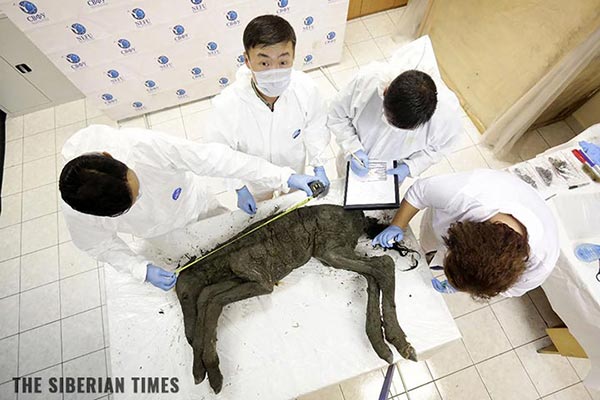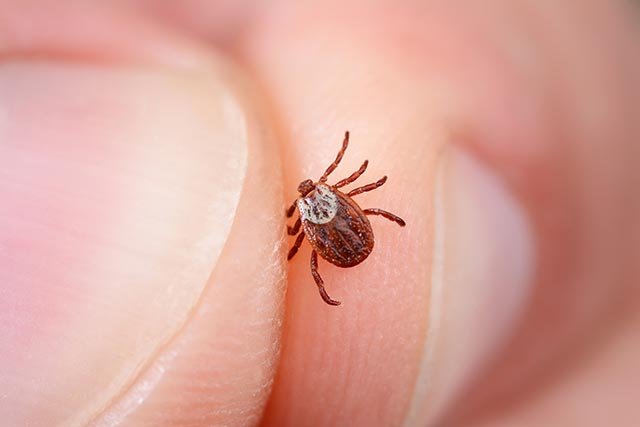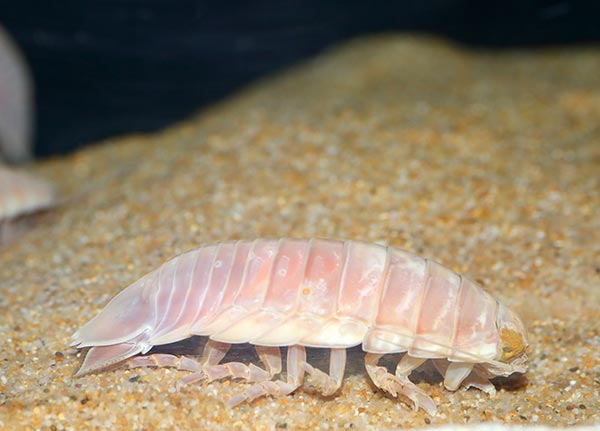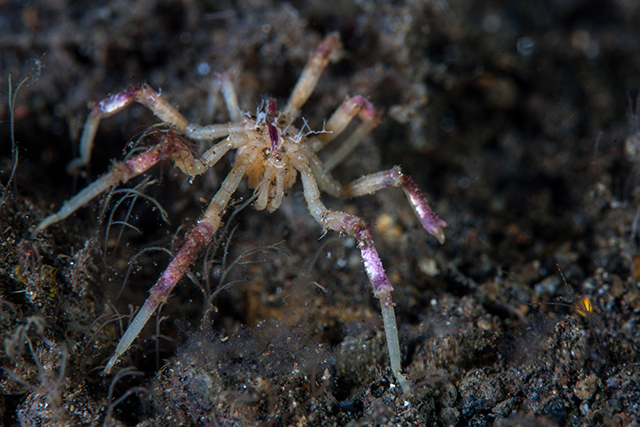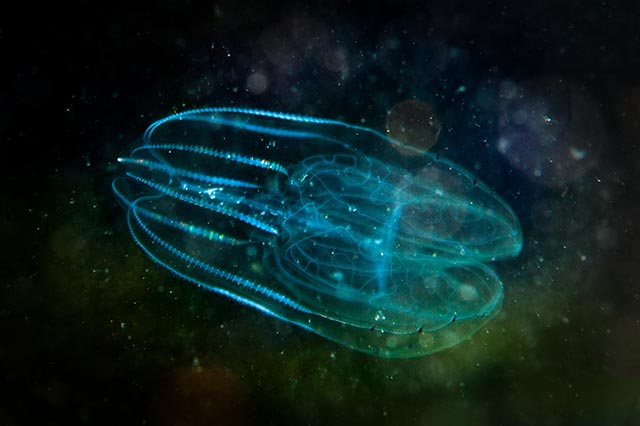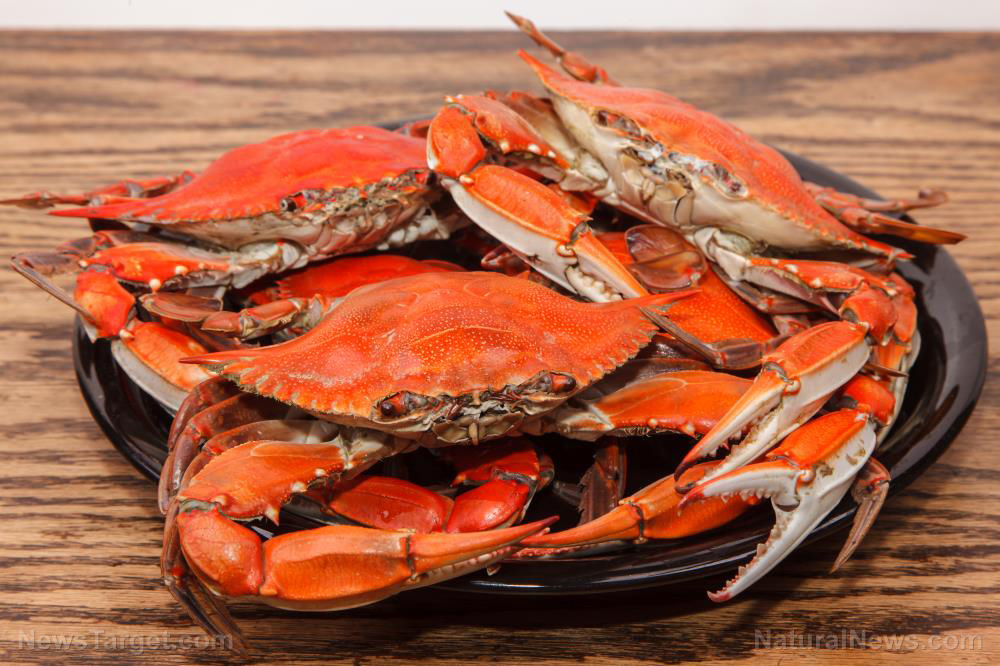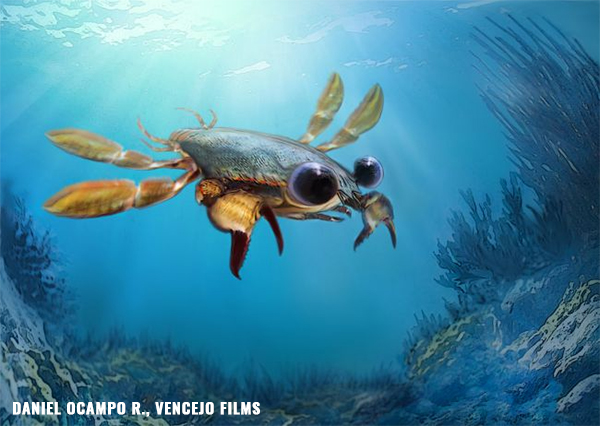
Its discoverers dubbed it Callichimaera perplexa, "perplexing beautiful chimera" in Latin. The name came from the chimera of Greek mythology, a monster described by Homer as "not human, lion-fronted and snake behind, a goat in the middle." (The snake part often gets translated as having the entire reptile for a tail instead of the tail part.)
The real-life chimera made a bit more sense than the mythological monster. The chimera crab mashed together body parts found on later arthropods, suggesting that its descendants re-evolved these parts later on.
Its mandibles resembled that of modern-day shrimps. For limbs, it had the claws of a frog crab (family Raninidae) and the swimming appendages of an equally extinct sea scorpion (order Eurypteridae).
Its most striking features are its huge eyes. They are so big that their human equivalent would have soccer ball-sized eyeballs. (Related: “Are they dreaming?” Recent footage shows an octopus changing color while it SLEEPS.)
The chimera crab mashes together the body parts of different arthropods
“[It had] huge, enormous eyes,” explained University of Alberta researcher Javier Luque, the leader of the team that identified the chimera crab. “They're like Little Red Riding Hood [when she asks the wolf], 'What big eyes you have. What do you use them for?'”
Luque theorized that the chimera crab used its huge eyes to actively find comma shrimp (order Cumacea) and other small marine arthropods. Unlike other animals that also fed on tiny crustaceans, the chimera crab was likely an active predator.
Its paddle-like limbs would give it enough speed to run down its prey. Once it caught up to a target, the crab brought its powerful claws to bear.
The researchers came across the first fossil of the chimera crab in 2005. They found it during an archaeological trip to Pesca, Colombia, a remote town located high up the Andes Mountains.
Back then, Luque was an undergraduate student at Yale University. He described the chimera crab as a leggy-looking creature, and while it resembled a crab, he thought it was more spidery than crab-like.
Analysis of the fossils showed that the chimera crab lived during the Cretaceous period at around 95 to 90 million years ago. The animal would fit on the size of a quarter.
True crabs may have discarded and redeveloped body parts throughout their evolutionary history
Years after finding the first specimen of the chimera crab in South America, Luque learned about similar findings in Wyoming and the North African country of Morocco. He gathered more than 70 fossils of adults and larvae of both sexes.
He theorized that the chimera crab possessed the adaptability to live in different places and environments. Its extraordinary characteristics suggest that it was a distinct branch of the evolutionary tree for crabs.
Besides looking like a mash-up of different arthropods and crustaceans, the chimera crab also sported parts found in the free-swimming larvae of modern crabs.
Adult specimens possessed large compound eyes, but no eye sockets. They also had bent claws, mandibles that looked like legs, an exposed tail, and an extended body.
While the chimera crab didn't resemble modern adult crabs, it did look like the larvae of its descendants. Based on their analysis of the fossil, Luque's team theorized that true crabs discarded their body plans several times, only to evolve them again.
“I call it my beautiful nightmare because it was so beautiful and frustrating,” Luque shared.
Sources include:
Please contact us for more information.
















